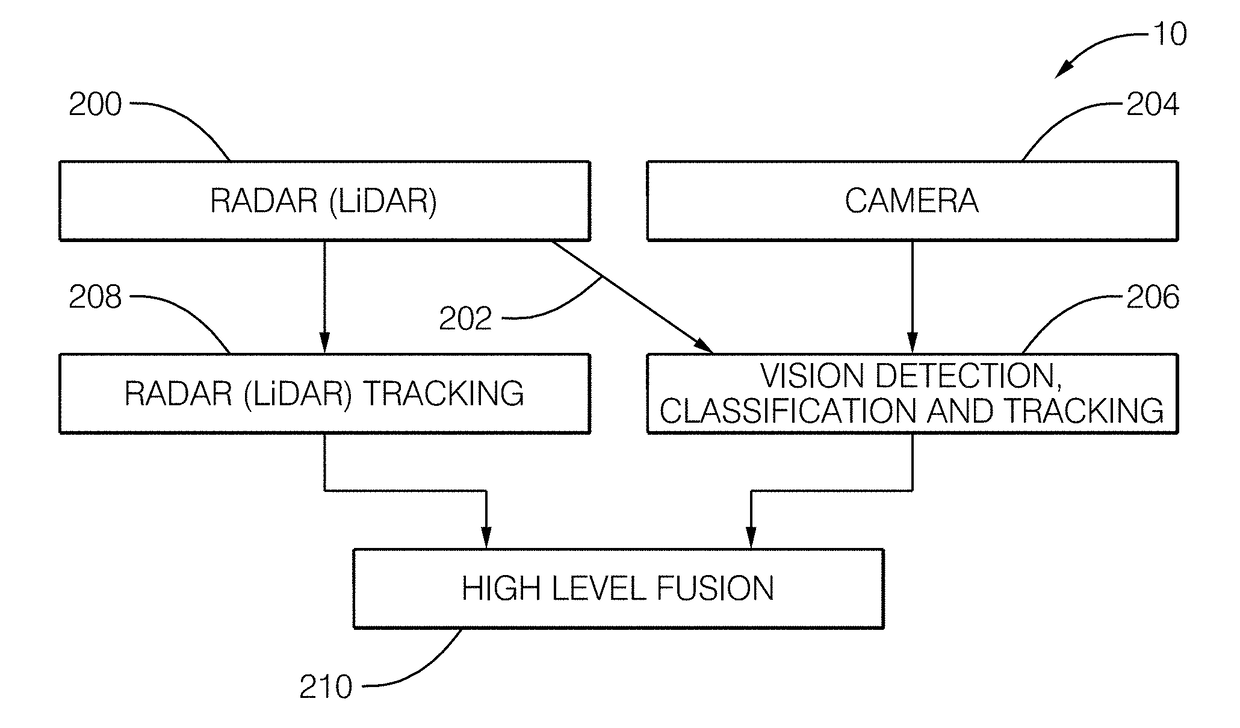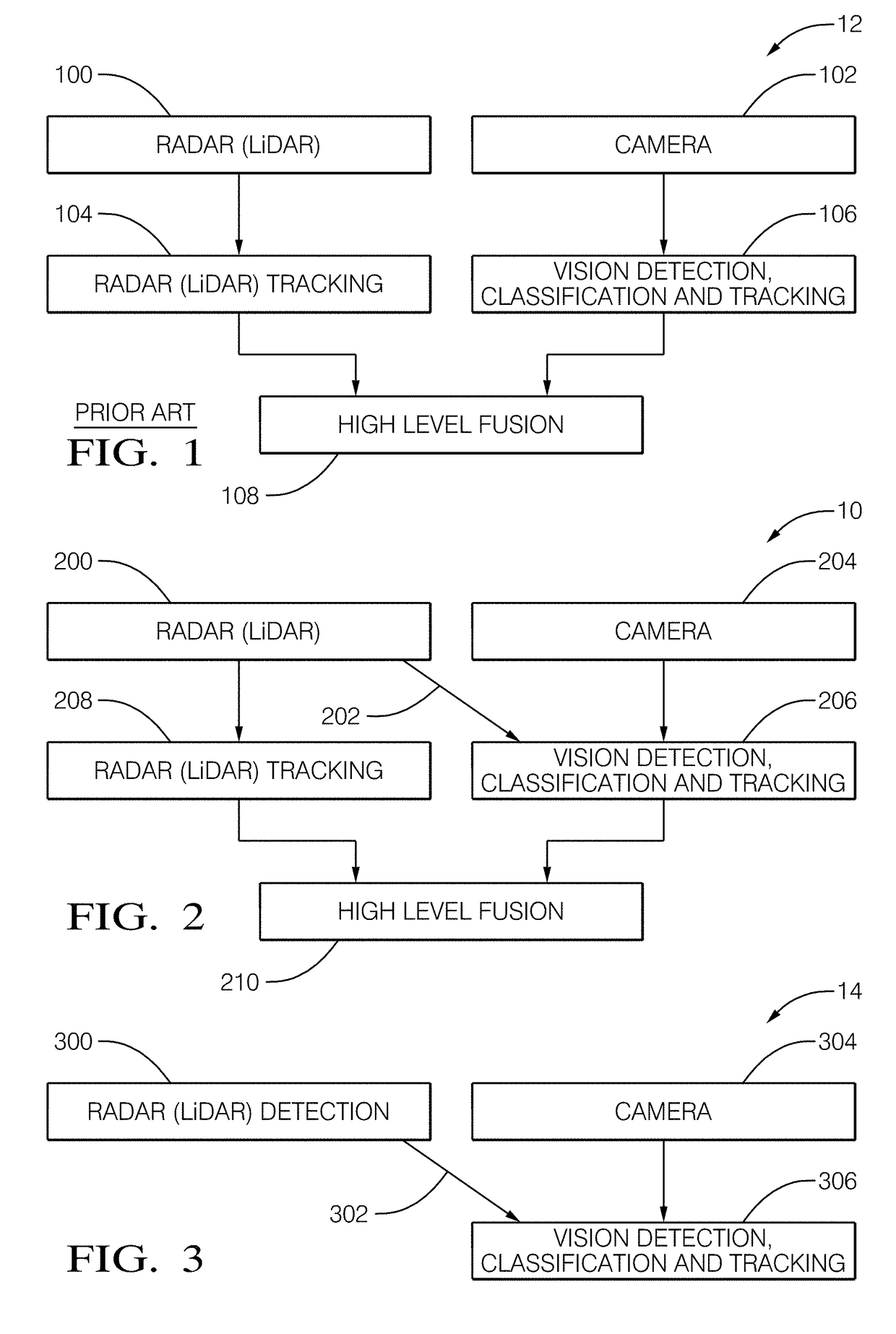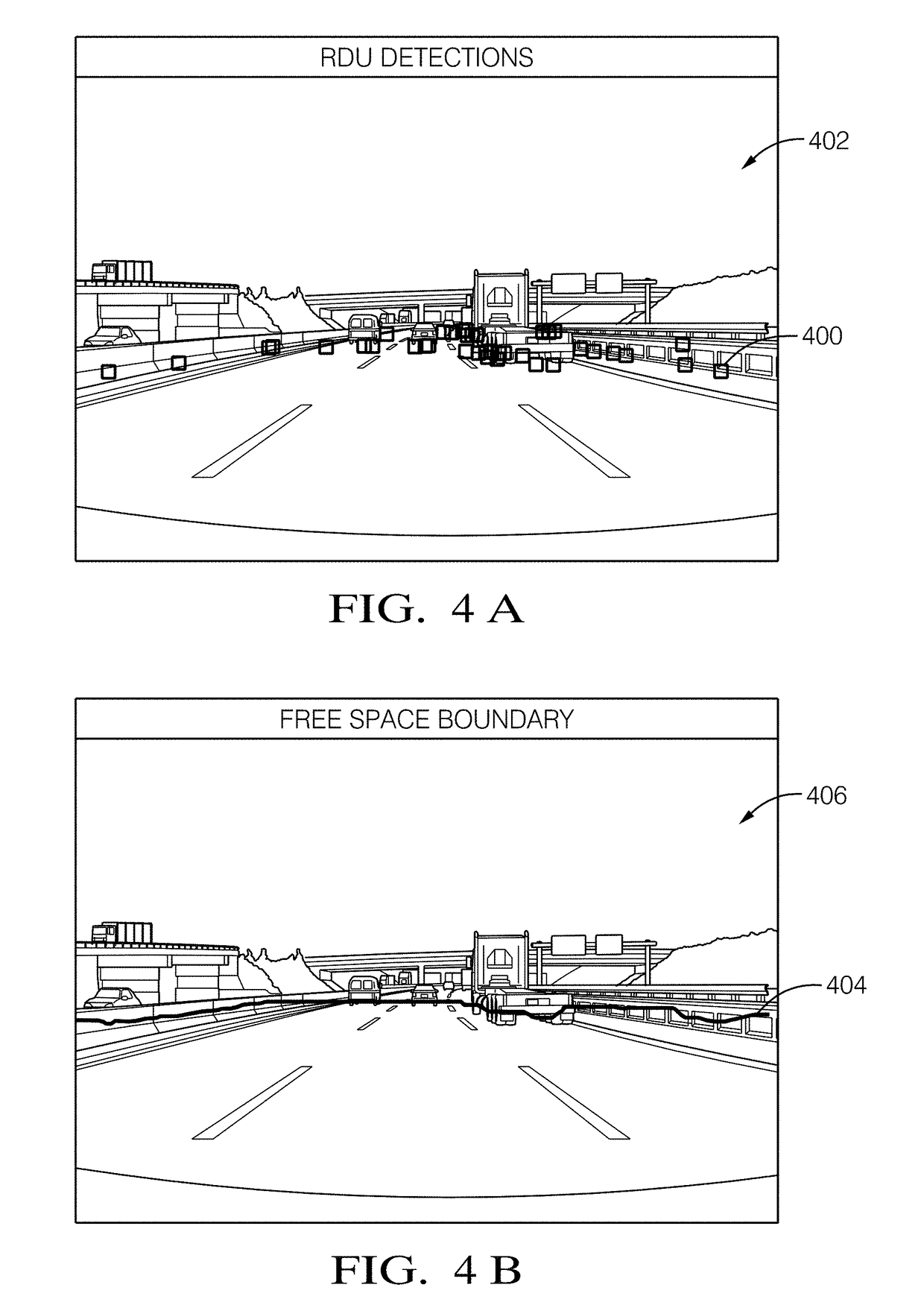Vision algorithm performance using low level sensor fusion
a technology of low-level sensor and vision algorithm, which is applied in the field of vision algorithm performance using low-level sensor fusion, can solve the problems of limited work in the field of low-level sensor fusion, and achieve the effects of improving the classification results, and reducing false detections
- Summary
- Abstract
- Description
- Claims
- Application Information
AI Technical Summary
Benefits of technology
Problems solved by technology
Method used
Image
Examples
Embodiment Construction
[0025]The present principles advantageously provide a method and system for improving vision detection, classification and tracking based on RDUs. Although the present principles will be described primarily within the context of using Radar (LiDAR), the specific embodiments of the present invention should not be treated as limiting in the scope of the invention. For example, in an alternative embodiment of the present invention, a Light Emitting Diode (LED) sensor may be used.
[0026]In ADAS and automated driving systems, sensors are used to detect, classify, and track obstacles around the host vehicle. Objects can be Vehicles, Pedestrian, or unknown class referred to as general objects. Typically two or more sensors are used to overcome the shortcoming of single sensor and to increase the reliability of object detection, classifications, and tracking. The output of the sensors are then fused to determine the list of objects in the scene. Fusion can be done at a high level where every...
PUM
 Login to View More
Login to View More Abstract
Description
Claims
Application Information
 Login to View More
Login to View More - R&D
- Intellectual Property
- Life Sciences
- Materials
- Tech Scout
- Unparalleled Data Quality
- Higher Quality Content
- 60% Fewer Hallucinations
Browse by: Latest US Patents, China's latest patents, Technical Efficacy Thesaurus, Application Domain, Technology Topic, Popular Technical Reports.
© 2025 PatSnap. All rights reserved.Legal|Privacy policy|Modern Slavery Act Transparency Statement|Sitemap|About US| Contact US: help@patsnap.com



